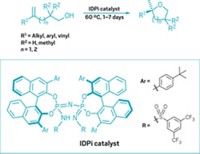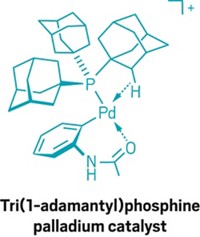Advertisement
Grab your lab coat. Let's get started
Welcome!
Welcome!
Create an account below to get 6 C&EN articles per month, receive newsletters and more - all free.
It seems this is your first time logging in online. Please enter the following information to continue.
As an ACS member you automatically get access to this site. All we need is few more details to create your reading experience.
Not you? Sign in with a different account.
Not you? Sign in with a different account.
ERROR 1
ERROR 1
ERROR 2
ERROR 2
ERROR 2
ERROR 2
ERROR 2
Password and Confirm password must match.
If you have an ACS member number, please enter it here so we can link this account to your membership. (optional)
ERROR 2
ACS values your privacy. By submitting your information, you are gaining access to C&EN and subscribing to our weekly newsletter. We use the information you provide to make your reading experience better, and we will never sell your data to third party members.
Synthesis
New Take On C-F Activation
December 11, 2006
| A version of this story appeared in
Volume 84, Issue 50
The first examples of Suzuki-type cross-coupling involving perfluorinated arenes have been reported by Udo Radius and his coworkers at Karlsruhe University, in Germany (J. Am. Chem. Soc. 2006, 128, 15964). Chemists have taken a great interest in C-F bond activation reactions in part to synthesize fluorinated drug analogs. The very strong C-F bond helps modulate the lipophilicity of a drug to improve its bioavailability and helps control drug metabolism. So far, most cross-coupling reactions have involved converting monofluorinated arenes into nonfluorinated derivatives, while fluorinated arene products have remained elusive. Radius' group has developed a nickel catalyst, stabilized by N-heterocyclic carbene ligands, that selectively activates the C-F bond para to the electron-withdrawing CF3 group in perfluorotoluene or C6F5 group in perfluorobiphenyl. The catalyst then mediates coupling of the intermediate with a phenyl or biphenyl boronic acid to form polyfluorinated biphenyl or triphenyl products (one example shown).




Join the conversation
Contact the reporter
Submit a Letter to the Editor for publication
Engage with us on Twitter